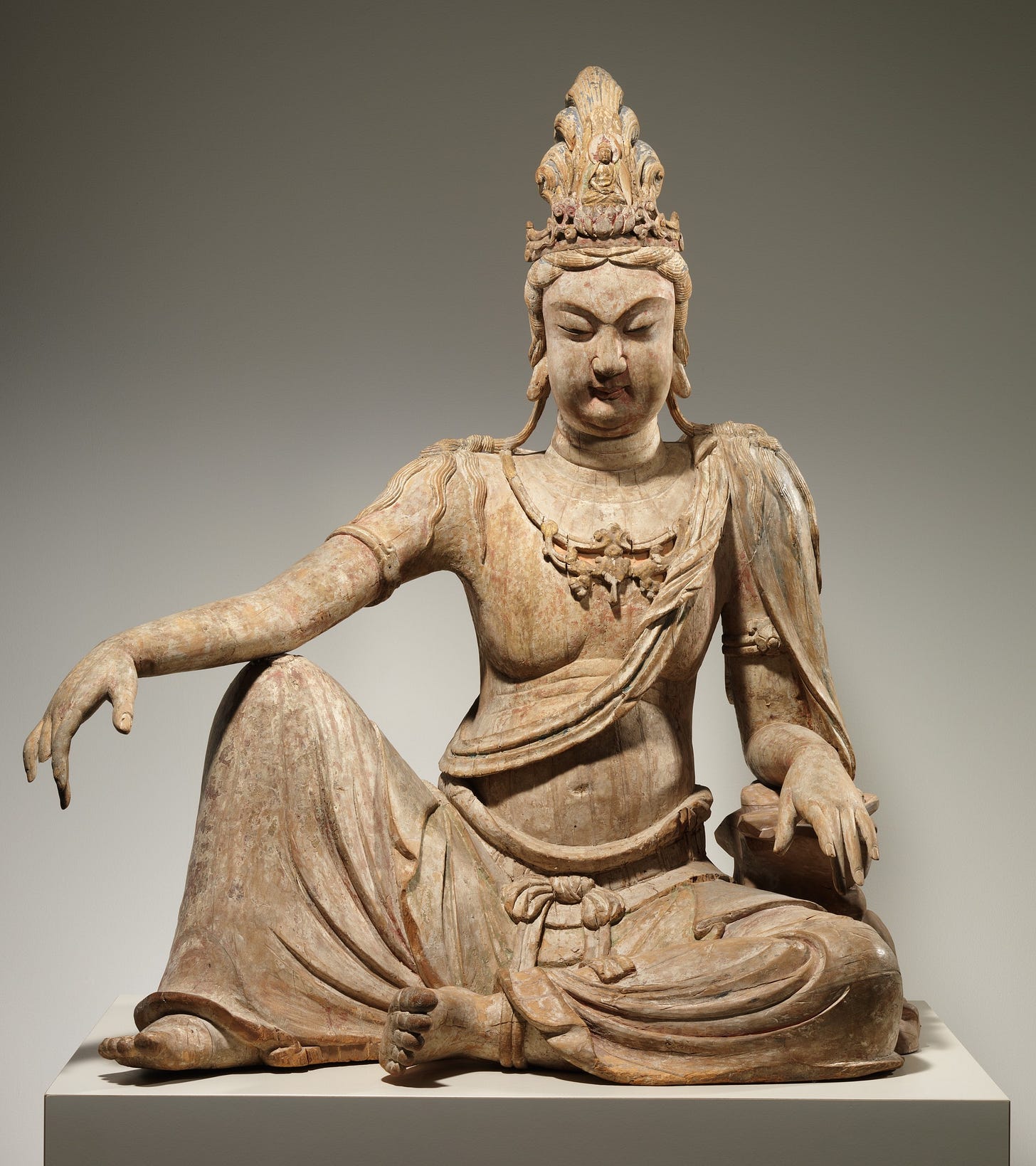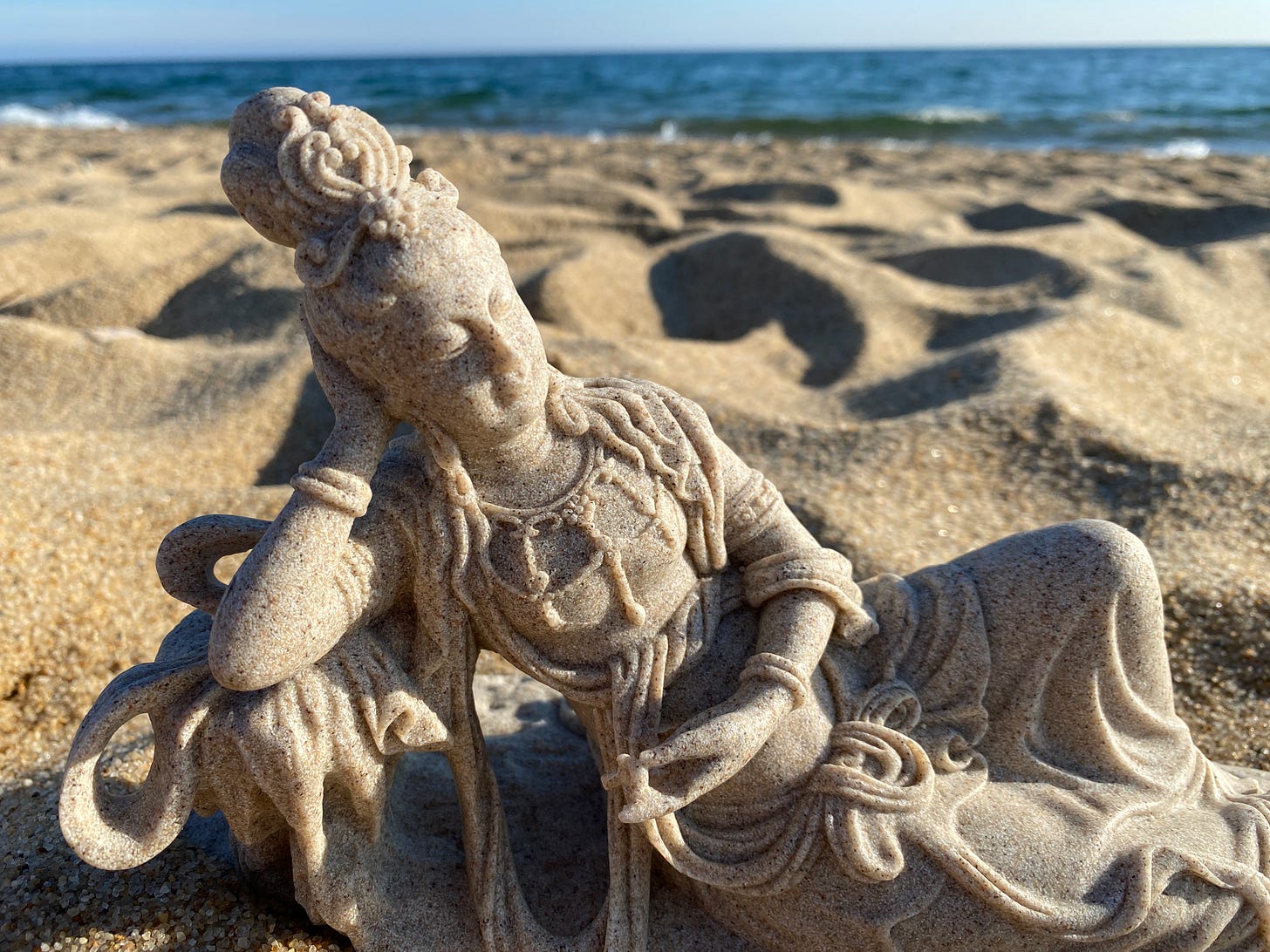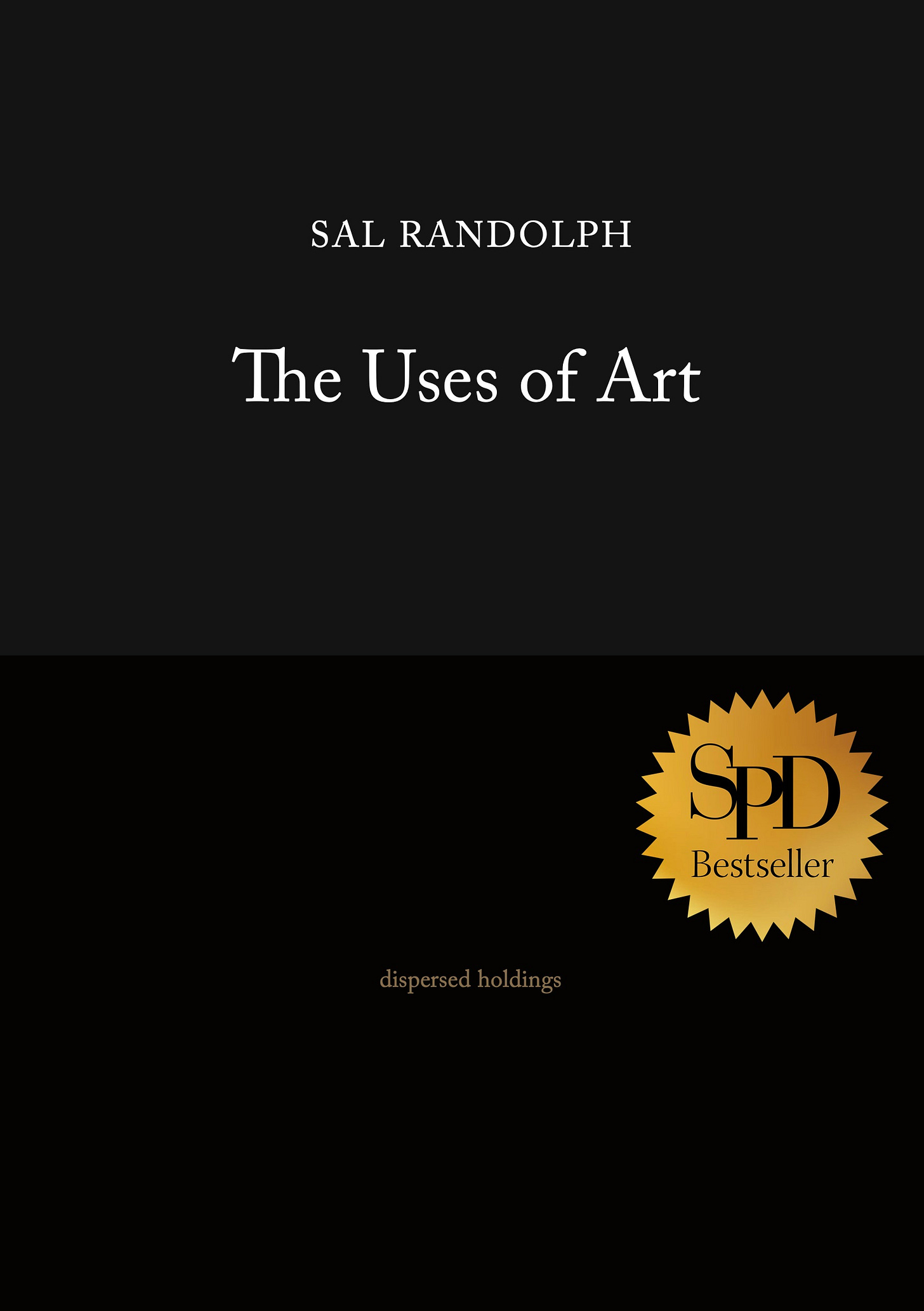
Dear Friends,
I want to talk to you about some things you probably already know. These are the last days of Pride month, and before it’s gone I wanted to say something about the state of emergency going on right now for LGBTQ+ people, and in particular for Trans people. I imagine that everyone reading this is at least a little bit aware of the rise of legislation and government policy in many states that targets speaking about, reading about, and even seeing people who do not conform to gender binaries and heterosexual norms, or who have transitioned from one gender to another. We’ve seen the rise of policies that are threatening parents and doctors to keep them from offering gender confirming care for young trans people. We’ve seen families fleeing the states where they live to find sanctuary and medical care for their children.
Further, this climate of hostility and suppression has a direct affect on the well-being and mental health of all Queer, Trans and Nonbinary persons, especially young people, who are at elevated risk.
The rise of this transphobia intersects profoundly with related policies that are trying to keep young people from learning about systemic racism, and policies which are trying to eliminate the rights of people with wombs to make their own choices about their bodies and about reproduction.
It’s bad.
There has been a bit of good news recently as some of these laws have been struck down in the courts, but the situation is still dire.
I feel that many people in the communities that I’m in don’t quite know how to respond to all this.
One potential for response comes from the idea behind Pride itself: appearance, community, and celebration as a political force.
This week I consider what what Zen might offer to Trans Pride and Trans celebration through the figure of the gender-changing Bodhisattva Guanyin.
— Sal
P.S. Scroll all the way down if you’d rather watch the (shorter) dharma talk version of this post.
Embodiments of Awakened Beings
As a student of Zen, I’ve often wondered what relation I should have to the images, statues, and figures of the Buddha and of Bodhisattvas that I find in museums, or for that matter in gift shops. Should they create in me something like religious feeling? Should I somehow be worshiping them?
Recently, in museums, I’ve begun meditating with the Buddhas I encounter, especially if there is a seat nearby. In the Asian Art Museum in Seattle, they had one room set aside for contemplation, with three Buddha figures and a small bench. I sat down, took off my shoes, put my legs in a half-lotus and my hands in the cosmic mudra, and meditated. People came and went, sometimes looking at me. The Buddhas remained still. A series of devotional sounds filled the room, heart sutra, a chant I didn’t recognize, shakuhachi flute, temple bells.
I’ve sat with Buddhas at the Rubin Museum, and also with Buddhas, Bodhisattvas, and arhats at the Met. I’ve been doing this out of curiosity as much as affinity. What do these figures mean to me?
At the same time, I’ve been immersed in news reports of increasing misogyny, homophobia, and transphobia across the country, and I’ve found myself at a loss as to respond. I’ve been wondering what the Zen teachings and Zen practice can offer.
I hope that we all throw ourselves into the political struggle against transphobic policies.
But I also hope that we can look for, and find ourselves in the Zen teachings, that the Zen teachings can recognize us, and that we can recognize ourselves in them.
One place we can look for this kind of recognition is in the stories of all the various Buddhas, Bodhisattvas, teachers, monks, laypeople, and students who appear in our literature.
The Bodhisattva I would like to offer to our attention today is Avalokiteśvara, also known as Guanyin in Chinese, or Kannon in Japanese. Avalokiteśvara is the Bodhisattva who embodies compassion and response. Avalokiteśvara is also a bodhisattva who has changed genders over the course of their history. A number of people have already done this, but I’d like to firmly claim Avalokiteśvara, to claim Guanyin, as a Queer and Trans figure, as a Trans embodiment.
From Avalokiteśvara to Guanyin
Let’s further consider this Bodhisattva we know as male, as female, and as able to change into any form.
The usual story goes like this: in India, Avalokiteśvara was understood and depicted as male. As Buddhism entered China, their name was translated into Chinese rather than transliterated, and became Guanyin. There are two competing understandings of the roots of Avalokiteśvara’s name. One gives the meaning of looking down, as in gazing down on the world of suffering, another gives the meaning of hearing the sounds or cries of the world. The Chinese translation of Guanyin means the latter: the one who hears the sounds of the world.
For the first few centuries in China, Guanyin was depicted as male. Their robes left them bare-chested in the Indian style, they sometimes had a thin mustache, occasionally you could see the bulge of their male form.
For reasons that scholars still can’t resolve, something changed sometime in the 10th century in China: Guanyin began to be depicted as, and understood as, female.
Let us, for a moment, celebrate Guanyin’s transition!
As I said, scholars differ on how and why this happened. Some point to the influence of the Tibetan figure of Tara, who was considered to be a female counterpart to Avalokiteśvara. Others point to the legendary Chinese story of Miao Shan, a daughter who defied her father’s choice of husband and sought refuge in Buddhist practice, eventually being transformed into a celestial being. Others suggest that there was a lack or need in the Chinese spiritual landscape that only a female Guanyin could fulfill. To be honest, no one really knows. What we do know is that the female Guanyin appeared, and became in many ways the most popular figure of veneration in China and Japan.
But why, in particular, Avalokiteśvara or Guanyin?
The Bodhisattva Avalokiteśvara is first described in chapter 25 of the Lotus Sutra.
Here’s just a bit of it. The title of the chapter is “The All-Sidedness of the Bodhisattva Regarder of the Cries of the World.”
At that time, the Bodhisattva Infinite Thought rose up from his seat, and baring his right shoulder and folding his hands towards the Buddha, spoke thus; “World Honored One! For what reason is the Bodhisattva Avalokiteśvara named Regarder of the Cries of the World?”
The Buddha answered the Bodhisattva Infinite Thought: “Good son! If there be countless hundred thousand myriad kotis of living beings suffering from pain and distress who hear of this Bodhisattva Regarder of the Cries of the World, and with all their mind call upon his name, the Bodhisattva Regarder of the Cries of the World will instantly regard their cries, and all of them will be delivered.
“If there be any who keep the name of that Bodhisattva Regarder of the Cries of the World, though they fall into a great fire, the fire will not be able to burn them, by virtue of the supernatural power of that Bodhisattva’s majesty. If any, carried away by a flood, call upon his name, they will immediately reach the shallows.”
The Buddha goes on to list many dire situations. Even if a cyclone blew a person to the land of demons, even if they were being beaten by sticks, even if a person, guilty or innocent, was bound by chains, even if a caravan was set upon by robbers, anyone could be rescued or saved by saying the name of Avalokiteśvara.
Further, contemplating Avalokiteśvara a person can become free from lust, from anger, from confusion. Avalokiteśvara can even help you have children.
And then the sutra continues with a long list of forms that Avalokiteśvara can take. We are told that if beings can be saved by taking the form of a Buddha, Avalokiteśvara can take the form of a Buddha to offer the dharma. If beings can be saved by taking the form of a god, Avalokiteśvara can take the form of a god to offer the dharma. Thirty-three different forms are listed, including gods, demons, supernatural beings, and many different kinds of people, both male and female.
There are a few things that I find striking here.
First, all you need for Avalokiteśvara to help your suffering, even in the most dramatic situations, is to say their name. No arduous or lengthy practices or rituals are required. And you don’t have to be especially virtuous or pure: the imprisoned are helped whether or not they are guilty. It is the asking and the invocation that matter. Compassion reaches beyond categories.
Second, Avalokiteśvara can take any form that is needed, and this clearly includes forms that are male and female. So we know, from the moment we first hear a description of Avalokiteśvara, that an essential part of their nature is the ability to take on any form and to inhabit any expression of gender.
Bodhisattvas are embodiments of particular qualities. In turn they represent those qualities in ways that allow us to know them, to recognize them, and to embody them in our own lives.
This Bodhisattva Regarder of the Cries of the World has the infinite capacity to help anyone who asks, and the infinite capacity to take on the form of any being. We could think of these qualities as separate, but I might suggest that we consider them as if they are one thing, or anyway joined at the root. Compassion can be expressed in the way we appear to each other. And we can sometimes be saved by such appearances.
My Guanyin
As I was thinking of all this, I decided that I wanted to have a figure of Guanyin to contemplate. I’m in Provincetown, and I went to a store that I have known since I first came to town in 1984. It’s called Global Gifts, and at that time it was one of the few stores that was open year round. The owners would travel every year to Nepal and India and come back with incense, scarves, garments, prayer flags, beads, and countless figures from the Buddhist and Hindu pantheons. I liked to go in from time to time and be in the presence of all those gods, Buddhas, and Bodhisattvas, breathing their incense-laden air. It was the owner who first showed me the statues of Guanyin.
I remember a white porcelain figure with a removable hand. When you made a request of Guanyin, the shopkeeper explained to me, you took the hand, and only returned it when your request was granted. I was horrified. I’ve since seen explanations that are less threatening or transactional: the hand is the embodiment of her aid, and you carry it with you while your need or situation persists.
There was another figure she showed me where you could pour water into the figure, and it would drip very slowly from the vessel that Guanyin carried in her hands.
I looked at these with interest and curiosity, but I wasn’t sure I liked them. The Buddha figures made more sense to me at the time.
Now, I was ready for Guanyin, so I went back into the shop. It was at least 30 years ago that I had had those conversations with the shopkeeper; she was still there, behind the counter.
I said I was looking for a Guanyin, and at first I was met with consternation. “I think we’re sold out,” she said. “Guanyin is very popular.” I looked around the shop and pointed at plausible figures. “Lakshmi,” she said over and over. Finally I looked more closely at a reclining figure. “Surely that’s Guanyin,” I said. “Oh, yes,” she answered.
And so Guanyin came home with me.
The Guanyin that I found was cast in a mixture of resin and fine sand that articulated every tiny detail of their form. It looks almost as if the figure emerged out of sand to take form for just a moment before dissolving back into the beach. The figure appears to be lying on some kind of textured ground. Because they are made of sand, and all the details are made of sand, let’s think of it, fancifully, as a beach.
Like most depictions of Bodhisattvas, this Guanyin is wearing royal clothing. A draping skirt and a scarf or shawl that covers the shoulders, ties under the breasts, and ties again below the belly as it belts the skirt. Tendrils of this scarf undulate across one knee and behind one shoulder in a way that makes me think of depictions of celestial clouds.
Guanyin is adorned with bracelets on both wrists, an elaborate necklace across the chest, and a floral headdress. Their breasts and belly appear to be bare of clothing, and the necklace falls just so as to cover or reduplicate their nipples. Their face is soft but ambiguous in gender.
It is easy to see this Guanyin as simultaneously femme and nonbinary. They express more qualities of traditional femininity than I do, and yet that can also be true of earlier Avalokiteśvara figures which are ostensibly male. The figure on my desk won’t quite resolve into one gender or the other, which makes them a good companion for me.
Often Guanyin is depicted standing or sitting in a posture with one knee up and one leg dangling, known as royal ease. This Guanyin is leaning back, propped on something that looks like a mossy rock or a sturdy plant. Their right shoulder rests on this support, and their right hand props up their head. Their body is arrayed comfortably and their left hand forms the Karana Mudra which dispels what is negative, inviting joy. In light of everything that is happening in the world, their ease seems like a radical act.
I didn’t make an altar for my new Guanyin. I put them on my writing table, which is an altar of its own kind. Sometimes they recline on the top of the stack of books I am reading. Sometimes they recline next to my laptop, gazing downward.
Reclining isn’t a meditation posture that we ordinarily recognize, and I don’t especially recommend trying it at home, but this Guanyin seems deeply absorbed in samadhi.
This is the Bodhisattva who appears in the Heart Sutra, saying “Oh, Shariputra! Form is no other than emptiness, emptiness no other than form.” This is the great insight that nothing we perceive or experience has a fixed nature, including ourselves. It’s no surprise that the Bodhisattva of transformation is given as the source of this insight.
Though scholars feel uncertain about how and why Guanyin’s transition from male expression to female expression came about, it is my own feeling that the inherent all-sidedness of Guanyin is what made this possible. Guanyin’s power to help comes from both their ability to listen and hear, and their ability to transform. Guanyin’s compassion is such that to hear is to transform: there is no separation between need and response. Guanyin is inherently self-transforming or, you could say, Trans.
Trans Pride Bodhisattva
I don’t know precisely what to do about the increasingly hostile situation for LGBTQ+ and Trans people. But one idea we can root ourselves in is the notion of Pride itself. Pride begins in the idea that visibility and celebration are political forces. Pride shows the community to itself in a way that creates joyful solidarity.
Representation, visibility, and celebration matter. They are, in fact, political.
We can hold up and celebrate our Trans Bodhisattva, Guanyin. Assigned male at their beginning, Guanyin has manifested for a thousand years as female. Inherently, Guanyin contains all gender identities and expressions and this is both source and expression of their compassion. Let us become intimate with this aspect of our own selves, and let us embody and celebrate this transforming and transformational compassion.
Guanyin Pride!
I’d like to end with the traditional Zen celebratory poem for Guanyin, who is also known as Kannon or Kanzeon in Japan.
As you read this, please consider it as a song of praise for the Regarder of Cries of the World, and simultaneously as celebration of the inherent treasure of Queerness, Transness and of Trans people throughout space and time.
Kan Ze On
Na Mu Butsu Yo
Butsu U In Yo
Butsu U En
Bup Po So En
Jo Raku Ga Jo Cho Nen
Kan Ze On Bo Nen
Kan Ze On Nen Nen
Ju Shin Ki Nen Nen
Fu Ri Shin
Kanzeon!
At one with Buddha
Directly Buddha
Also indirectly Buddha
And indirectly Buddha, Dharma, Sangha.
Joyful pure eternal being!
Morning mind is Kanzeon.
Evening mind is Kanzeon.
Nen, nen arises from Mind.
Nen, nen is not separate from Mind.
You can watch the dharma talk version of this post here:
My Guanyin at the beach.
Further adventures and new ways of seeing can be found in my book, The Uses of Art.
Artist Sal Randolph’s THE USES OF ART is a memoir of transformative encounters with works of art, inviting readers into new methods of looking that are both liberating and emboldening.
Dazzlingly original, ferociously intelligent.
— Michael Cunningham
A joyful, dazzling treasure-box of a book.
— Bonnie Friedman
Here’s a guide, to waking up, over and over again.
— Roshi Pat Enkyo O’Hara







Marvelous essay- thank you! Indeed a Trans Bodhisattva serves us all. As you write, “didn’t make an altar for my new Guanyin. I put them on my writing table, which is an altar of its own kind.” Indeed your writing is Guanyin.
Lovely picture of the statue in the beach...thanks for your thoughtful piece.